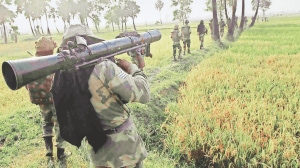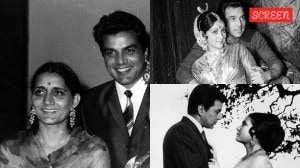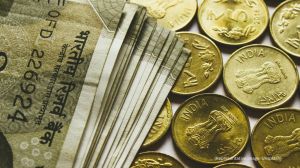House Check
Between walkouts and interruptions, how much business gets done in Parliament? Do young ‘earnest’ MPs fill up the benches or is it the old timers who troop in regularly? Figures from the attendance records of MPs in both Houses tell the inside story

TO what extent do Members of Parliament participate in the proceedings in Parliament? How much legislative business actually gets done in Parliament? Newspaper headlines often focus on walkouts and interruptions, leaving many wondering if anything actually gets done in Parliament.
Consider these statistics. In the first session after the UPA government was formed, Lok Sabha lost 39 per cent of the total session time, and Rajya Sabha 46 per cent on account of interruptions. These ratios were much lower in later sessions, staying below 20 per cent till the August 2005 session, before rising to 22 per cent and 23 per cent respectively in the December 2005 session. The disruption was even worse during the NDA regime, with the exception of Winter 2002 and Budget 2003 sessions.
DESPITE these interruptions, a fair amount of legislative business does get done. In the five-year period 2001-2005, Parliament passed a total of 288 Bills, at an average of 21 per session. During this period, an average of 25 Bills were introduced per session.
Or take the statistics of the Winter 2005 session. Parliament passed 17 Bills during the session and 921 starred questions (which require an oral reply) and 8051 unstarred questions (written reply) were admitted. And 15 motions calling attention to matters of urgent public importance were moved. Ministers made 10 statements in each House. All this despite the fact that 23 per cent of the scheduled time was lost on account of interruptions.
To get a better understanding of whether there are any discernible patterns in how our MPs attend Parliament, we sought information on the attendance records of Members of Parliament using the Right to Information Act. An analysis of the data threw up some interesting results. We found that the average attendance in both Houses of Parliament is between 70 per cent and 75 per cent.
How does this square up with the common perception that attendance levels are much lower? Televised proceedings show a large number of empty seats. The Indian Express had documented that just 30 MPs were present in Lok Sabha when the Contempt of Court Amendment Bill was passed. Indeed, on May 21, the Food Safety and Standards Bill was not taken up for consideration due to lack of quorum.
The answer to this lies in the way attendance records are made. Our data is based on the signatures of MPs in the attendance register. If an MP attends part of the day’s proceedings, he would be considered as present that day. Also, ministers, leaders of the opposition in the two Houses, the Speaker and Deputy Speaker of Lok Sabha and Chairman and Deputy Chairman of Rajya Sabha do not sign the register, and our data does not include their records.
With this caveat, we can address some questions. Is there any pattern along party lines? We find that among the larger parties, Rashtriya Janata Dal and CPI(M) have the best record, followed by Congress, Samajwadi Party, BJP and the Bahujan Samaj Party. We have considered only parties that have at least 15 Lok Sabha MPs signing the attendance register. (We’ve excluded the DMK which has 16 MPs in Lok Sabha, but seven of these are ministers and do not sign the attendance register). A possible explanation of this pattern is that the MPs from the governing parties have a better attendance than the opposition. We have not tested this hypothesis as our data set starts with the current government.
DO younger MPs attend more regularly? The answer may come as a surprise. They don’t. In fact, data indicates that the lowest average attendance record in Lok Sabha is of MPs less than 40 years old. In both Houses of Parliament, MPs in the age group 61-70 years have the best attendance.
The issue of reservation for women in Parliament has been contentious. Women form just 9 per cent of Parliament now. Do sitting female MPs score over their male counterparts on attendance? There is really no significant difference in Lok Sabha. In Rajya Sabha, women MPs have a better attendance than male MPs. Then there is the question of education. Does the level of formal education matter? In our data, 71 per cent of Lok Sabha MPs, and 85 per cent of Rajya Sabha MPs have at least a college degree. In Lok Sabha 4 per cent have a PhD, while the corresponding figure for Rajya Sabha is 11 per cent. The attendance record in Lok Sabha shows a clear correlation with educational qualification. Rajya Sabha shows a similar trend except for MPs with a doctoral degree.
A STUDY of the professional background of MPs indicates a trend. Many MPs declare multiple professions such as agriculture, law and education. A large proportion of MPs include social service or political work as a profession, and we excluded this category from our analysis. Our findings: lawyers and educationists have the best attendance record. MPs engaged in industry/business or media and entertainment have the lowest record; this might be a fallout of the fact that many of these MPs continue to pursue an active career in their fields.
Though we’ve kept away from taking names of individual MPs here, we’ll make an exception for two exceptions. In Lok Sabha, Dr (Col) Dhani Ram Shandil (Shimla) and in Rajya Sabha, Dr Faguni Ram (Bihar). They were the only MPs with the distinction of having a 100 per cent attendance record.
House Interrupted
• On average 22 % of the time of Lok Sabha and 24 % of the time of Rajya Sabha has been lost per session on account of interruptions since the beginning of the 13th Lok Sabha
• Time lost to interruptions was higher during the NDA government than during the current UPA government
• Interruptions were lowest in the Winter 2002 session, when Lok Sabha lost just 29 minutes, and proceedings in Rajya Sabha were not disrupted at all
Buzz in the House
• Since the beginning of the 13th Lok Sabha, an average of 26 Bills were
introduced per session, and 21 passed
• The most productive sessions were Winter 2002 during which 42 Bills were passed, and Monsoon 2001 during which 39 Bills were passed
Attendance Record
• The average attendance in both Houses falls between 70 % and 75 %
• There is no significant difference in average attendance between the members of Lok Sabha and Rajya Sabha
• Attendance was highest in the first session of the new government, and has dipped slightly since then
The Graduates
• In Lok Sabha, the average attendance is correlated with the highest educational qualification of the member
• In Rajya Sabha too, the attendance record of MPs improves with educational qualification, except in the case of MPs holding a doctoral degree
Professional Edge
• Lawyers and educationists have the best attendance record in Lok Sabha
• Retired bureaucrats and servicemen have above-average attendance ( about 75 %) in both Houses
• Lowest attendance is recorded by MPs who are engaged in industry/business or media and entertainment, many of whom have an active career
Old Regulars
• The best attendance profile, by age, in both the Houses of Parliament is in the age group 61-70 years
• Young MPs (below 40 years age) have the lowest attendance in Lok Sabha, at 70 %
Party Goers
• Among the six largest parties, Rashtriya Janata Dal and CPI(M) had the best attendance record
• This was followed by the Congress
• BJP and BSP had the lowest average attendance
The authors are with the Parliamentary Research Service initiative of the Centre for Policy Research, New Delhi
With C V Madhukar



- 01
- 02
- 03
- 04
- 05




























